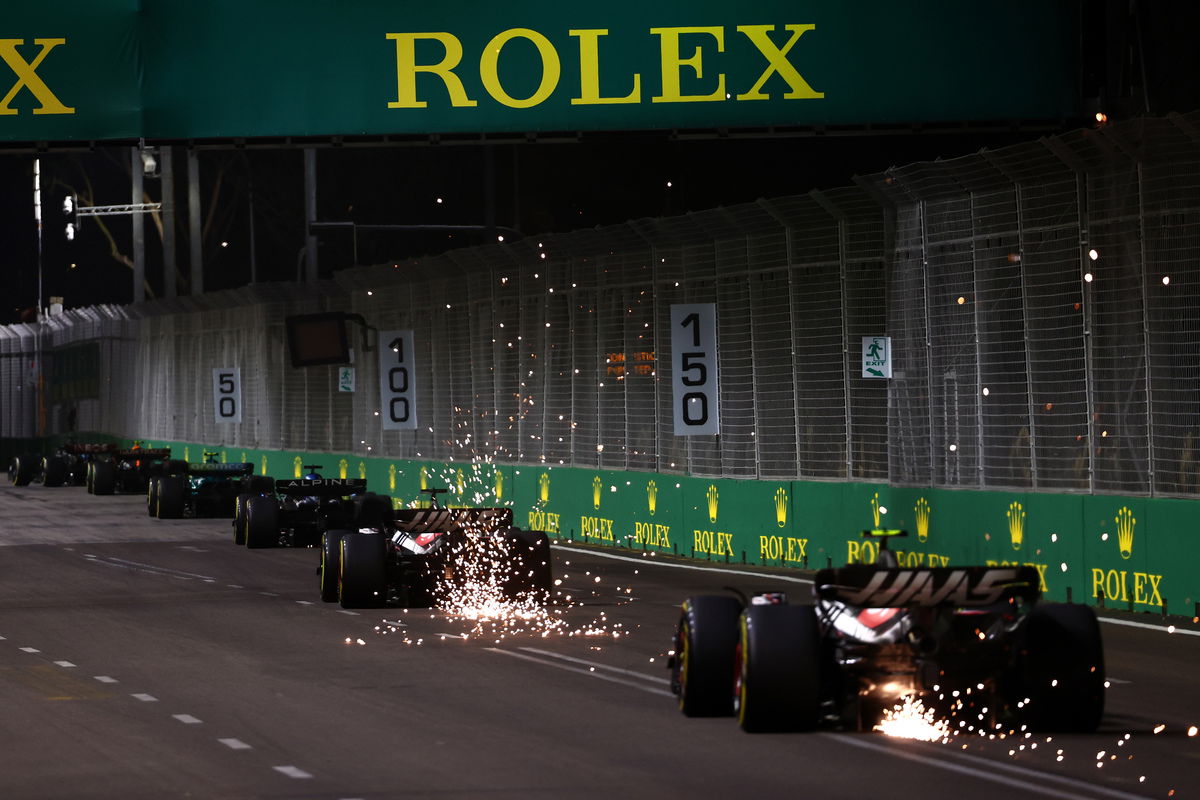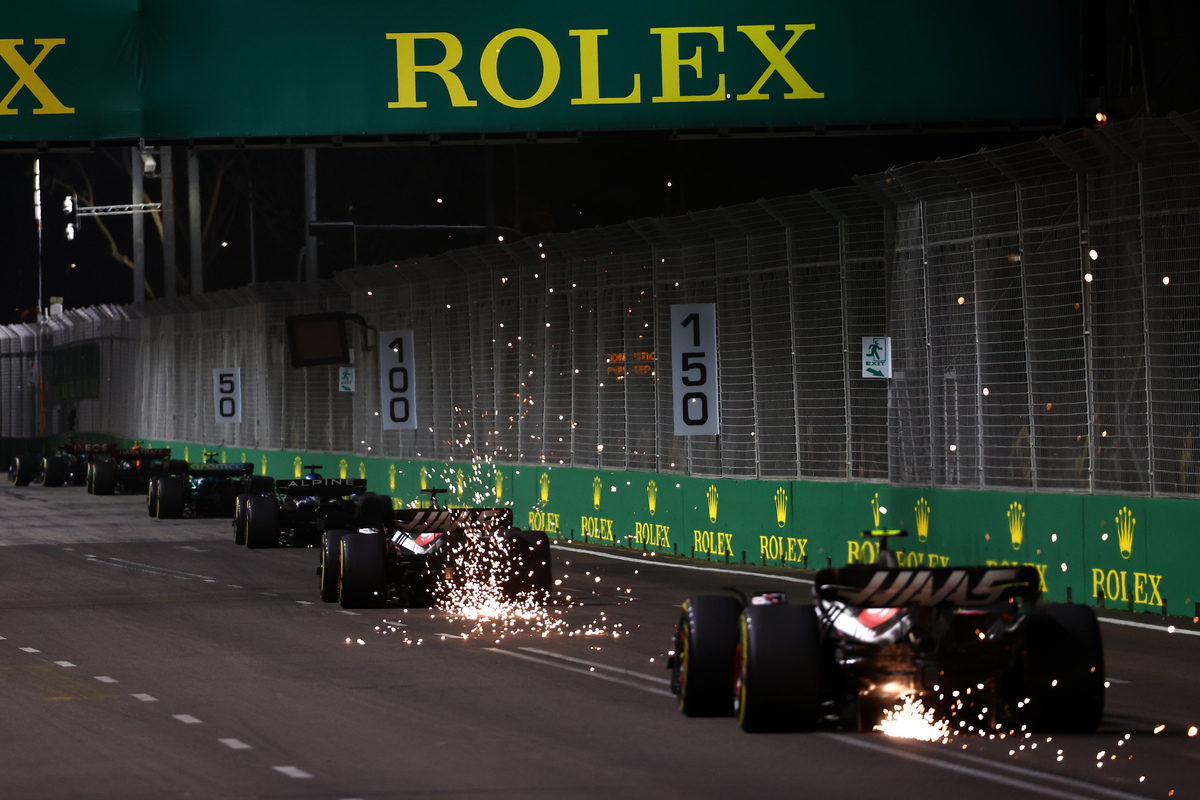

The FIA is concerned about low ride heights and is keen to standardise the plank, which is fitted to the floor of every F1 car, in the coming seasons.
The plank became a talking point when Lewis Hamilton and Charles Leclerc were disqualified from the United States Grand Prix for excessive wear to the underside of their cars.
While mitigating factors were a factor that weekend, noting the Sprint format of the event saw cars go into parc fermé earlier than normal and have to withstand more competitive running than across a standard weekend on a notoriously bumpy circuit, both were outside of the regulations.
At the time, the FIA was criticised for its targeted scrutineering approach, with Hamilton suggesting he had heard other cars were also illegal but escaped punishment as they were not inspected.
It is a questionable claim as the sport’s governing body has sensors that can detect the way a car is bouncing and whether it is impacting the ground.
As a result, it can accurately predict which F1 cars are likely at risk of ride-height or plank-wear infringements.
It is endemic of the catcher versus poacher game within motorsport, however, with teams perpetually chasing any advantage.
That often sees them push the rules to their breaking point, and occasionally beyond, in pursuit of performance.
In this instance, the low-ride height teams have employed not only increase the risk of exclusion but also the chance of a driver crashing as the car bottoms out over a bump, as occurred with Lando Norris in Las Vegas.
“We do need to make sure circuits, generally speaking, avoid features which may cause that,” noted Nikolas Tombazis, the FIA’s head of single seaters.
“It’s a thin line between when it may be the responsibility of a circuit to sort out some features or detail and when the teams may just need to raise the car up more.
“We obviously will try to fix these areas with the circuits.
“Are the cars too low? Yes, we would rather they were riding a bit higher, but the inherent characteristics of a ground-effect car is that it tends to have more performance running low.
“That’s something I don’t think we can easily avoid.”
Ground effects returned to F1 at the start of last year and introduced the concept of ‘porpoising’.
The aerodynamic phenomenon occurs when the airflow under the car, which pulls it towards the road, stalls. As it does, the car loses downforce and rises on its suspension.
When the airflow attaches, the suction effect returns, and the car squats again. The process typically repeats rapidly, and more noticeably, at high-speed.
To combat that, the FIA introduced a sensor to measure the ‘aerodynamic oscillation’ while other changes were made for 2023.
That included raising the floor edge by 15mm and the height of the diffuser’s throat, while stiffness was also increased.
Those changes came on top of tweaks made during the 2022 season surrounding how the FIA measured plank wear after drivers were subjected to, in some cases, 10G vertical impacts as cars hit the ground.
With regulations surrounding the plank and floor of the car, it begged the question of why it was not a standard part, given the plank, in particular, adds no performance and so many other areas have been locked under the regulations.
“We tried to do a uniform skid in the regulations, but you have to realise that sometimes we do want to do things and then we still need to go through governance, and the teams need to vote for it,” Tombazis explained.
“Sometimes, you don’t have enough support.
“So, for 2026, we believe we’re going to simplify very much that area that we couldn’t simplify as much as we would have liked for the current regulations.”




















Discussion about this post